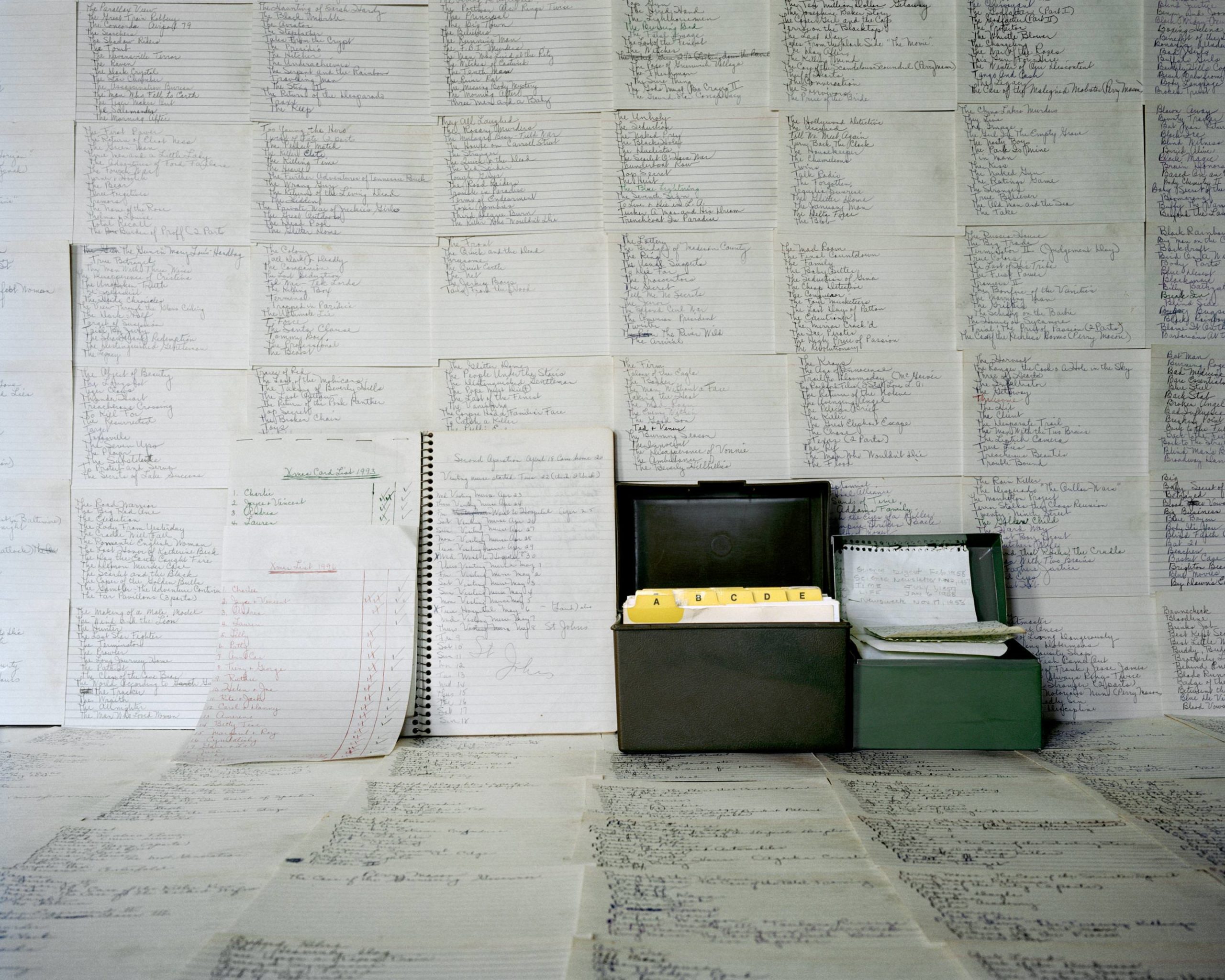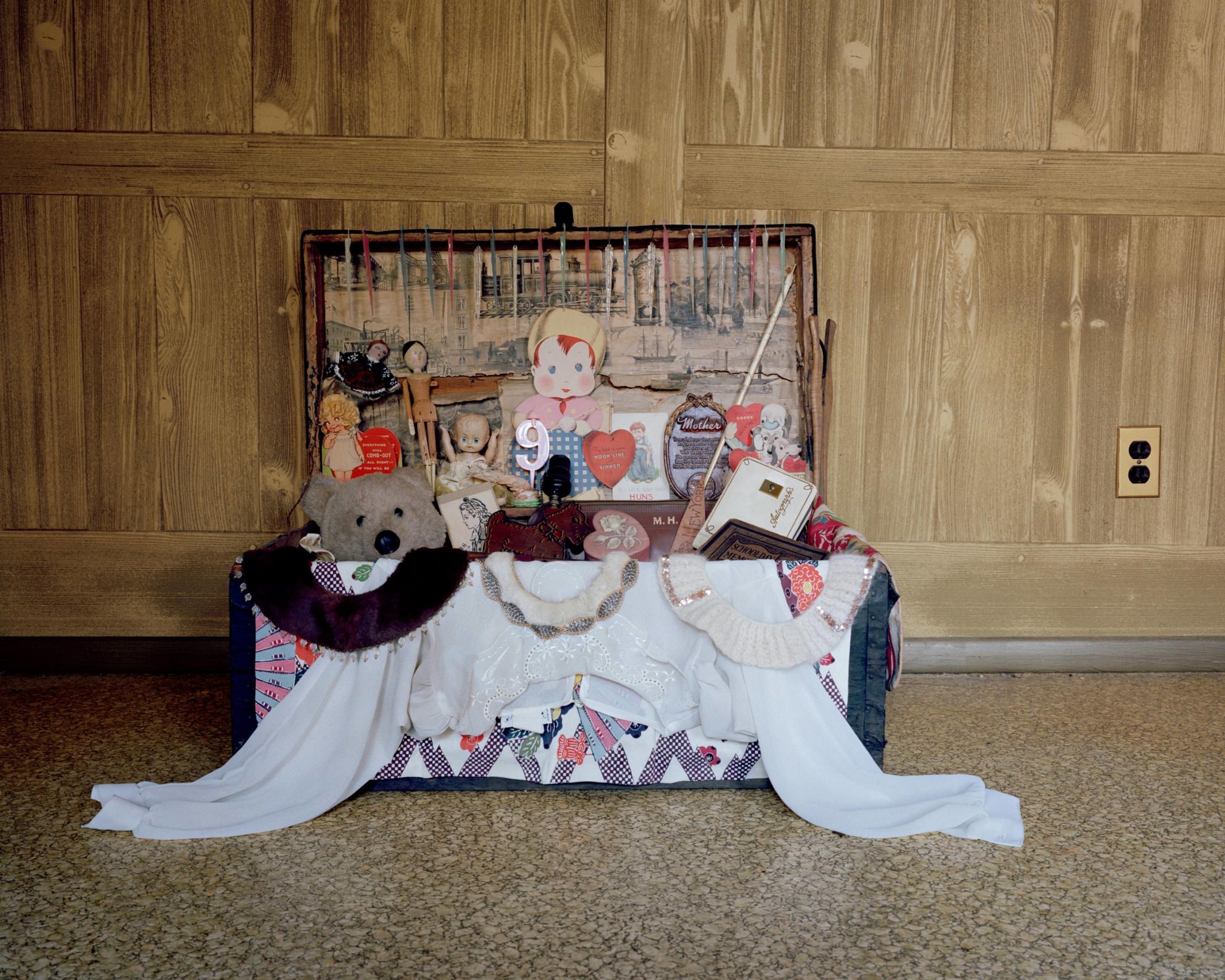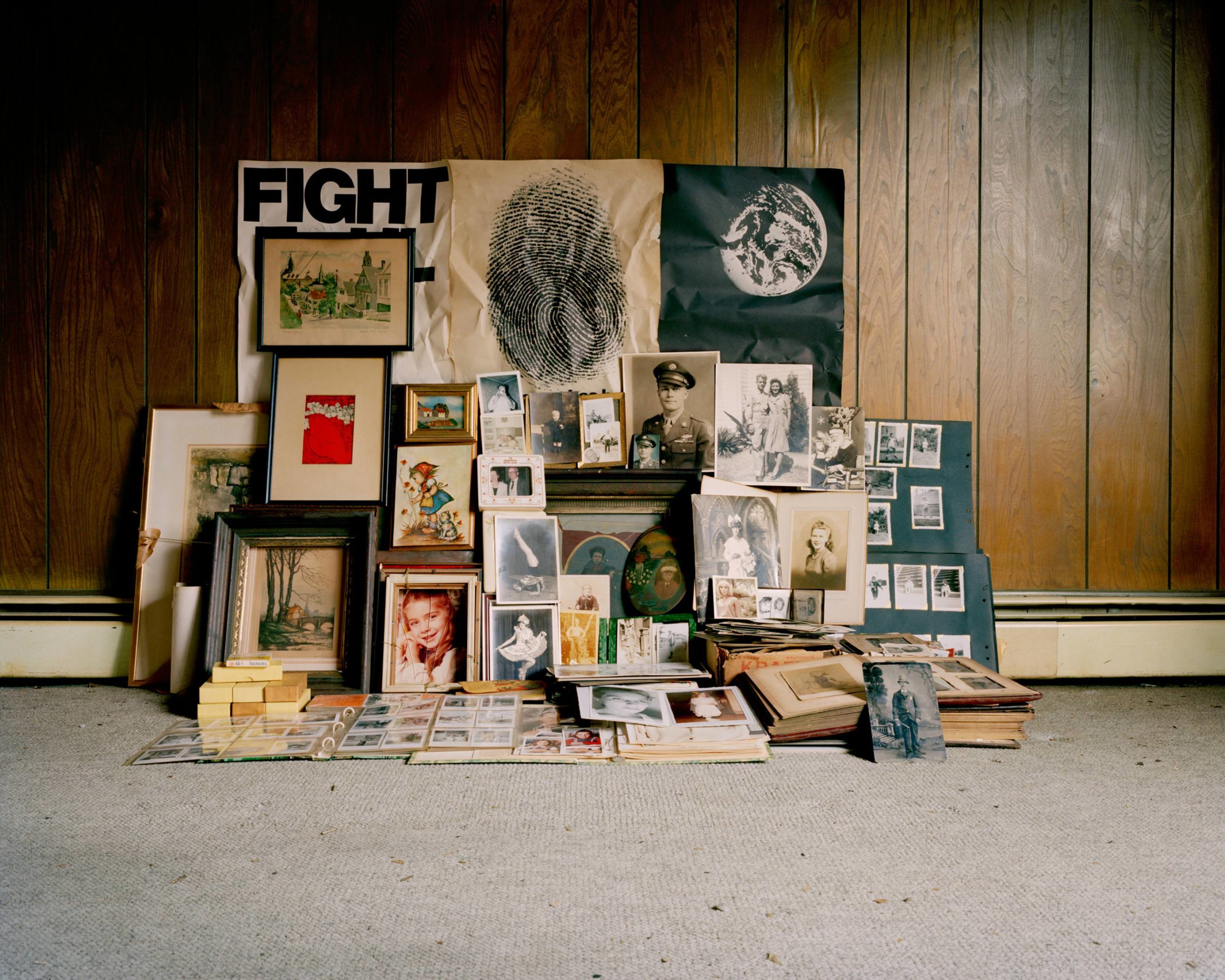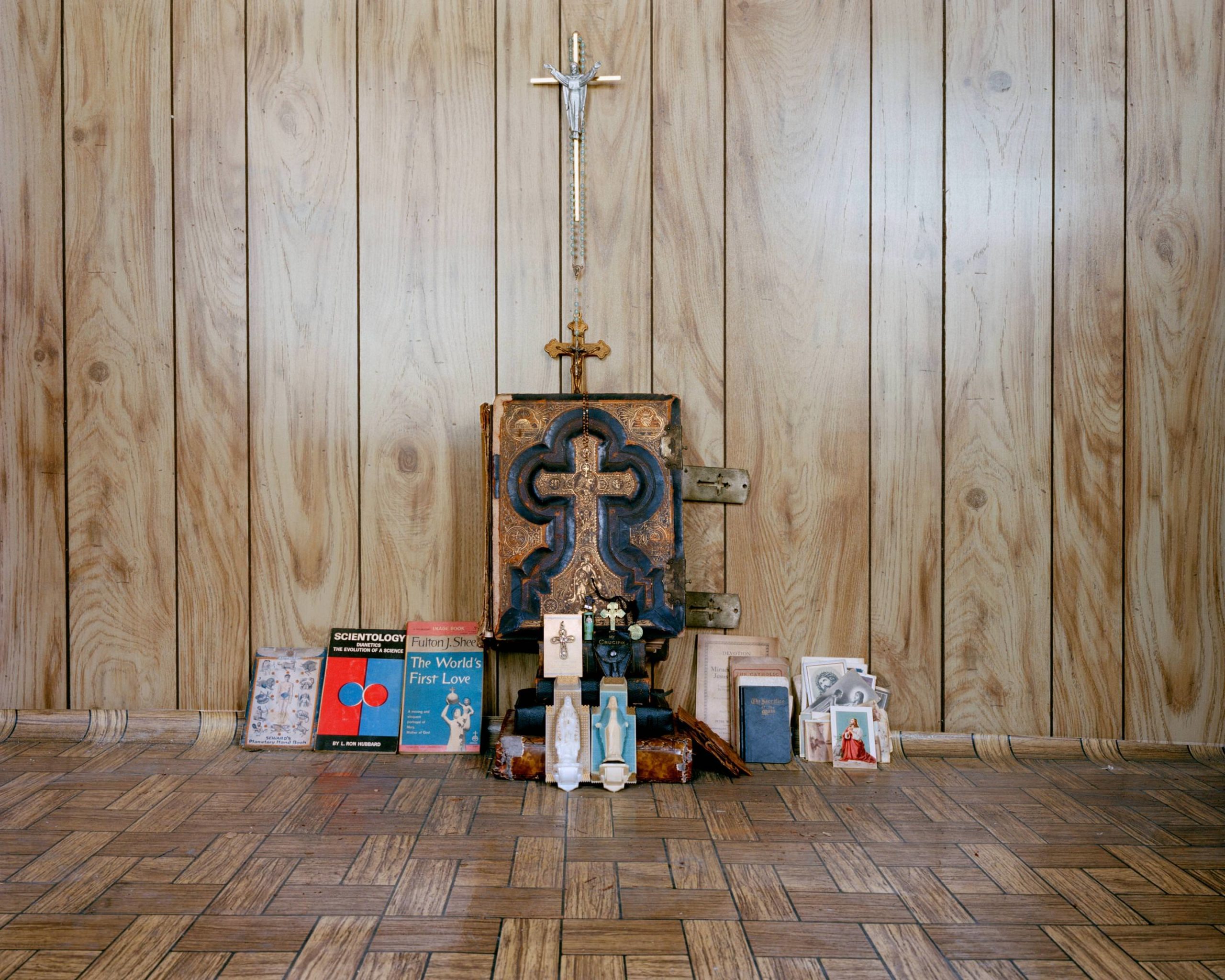Andrea Tese’s current exhibit, “Inheritance,” examines the artist’s process of sorting through, categorizing and photographing objects left by her deceased grandfather. Tese shot the series at his house in Maspeth, Queens, which the family sold after his death. “Inheritance,” on view at De Buck Gallery in New York through February 15, reflects on the meanings people attach to objects, as well as the transient nature of existence.
WHITEWALL: How did you break the objects up into categories?

2010-2012
ANDREA TESE: He had many collections, such as paperweights — dozens of them. “Civil Service Accessories” was another category. I had one ancestor that was a fireman, another that was a sheriff, and my grandfather had kept their things. I found handcuffs, a badge, and a Billy club. My rule was, once I settled on a category I had to include every object in the category. I wanted you to get a sense of who he was as a person. He didn’t care so much about what he wore; he didn’t own very many shoes. You get to know someone’s personality by what they choose to keep.
WW: What else did he collect?

Courtesy of DeBuck Gallery
AT: He had a jar of marbles that he collected, which he used to shoot squirrels that ate his peaches in the backyard. He also kept my grandmother’s collections. Another category was “Grandma’s Lists.” My grandmother kept lists of every movie or TV show she watched, article she read, book she read, and organized them into alphabetized flashcards that she kept in a box. For instance, if she watched an episode of “The Beverly Hillbillies” she would file it under “B.” OCD kind of runs in the family.
WW: When were your grandparents born?

Grandma’s Lists
AT: My grandfather was born in 1919. For his generation things weren’t so disposable. People bought things that were going to last and they kept them.
WW: What made you want to document this?

2010-2012
AT: The thing that bothers me the most about death is the fact that if you aren’t a writer, artist, or actor, and you haven’t created anything permanent, one or two generations later, you seem to disappear. Your memory vanishes after the people you knew and loved pass on. So that nothingness bothers me, and by documenting everything he owned I was trying to memorialize him, and create a kind of permanence.
WW: What happened to all these things?
AT: Some of it I kept, because I couldn’t part with it. Some of it is in boxes, and other stuff I gave away or threw out.
WW: Do you think creating this series helped you with grieving?
AT: It was way of me controlling the situation, because I couldn’t control that he died. It was cathartic for sure. It was a daunting task that was kind of left to me, because my mother was sick and my sister has young kids. But by categorizing it, I felt I could tackle it.
WW: Many of your other series, such as “What is Left Behind,” deal with death and also with family.
AT: I’m fascinated with, but not necessarily terrified of death. I’m not religious, so creating these works is my way of coping with death. I don’t believe in Heaven or Hell, so I needed to deal with death another way. In my previous series, my father’s mother died, and so I searched for all my relatives — aunts, cousins, second cousins — and I took all their portraits.
You pretty much leave three things behind: your body, your possessions, and your memory. People that you create are the last thing you leave behind. Your legacy is so fleeting. A lot of my relatives didn’t even know about her, their great-grandmother, because they were so far removed.
I’m also into funeral photography; I take traditional coffin portraits. I start the book with one of these portraits, and end with a self-portrait of myself in the house.
WW: It’s interesting that now people see funeral portraits as being morbid, when they used to be so commonplace.
AT: I don’t see them as being morbid either. In this day and age, funeral photography is taboo. But it used to be so accepted and natural. When photography first came out, you had to take a still object, and so taking pictures of dead people was convenient. Also, people didn’t have the money or access to be photographed, so the only time someone thought about taking your picture was when someone died. For me it makes complete sense.
My family was a bit weirded out when I took my camera into the wake. But I’m fascinated by postmortem photography.
WW: What was it like photographing your dead grandfather?
AT: I had everyone leave the room at the end of the wake. It was strange to be alone with a dead body, or even in the presence of a dead body. The animal in you kind of just feels it; you just kind of know they’re dead. It’s a strange presence. Then I set up my shot, from afar, and it was nice. It was emotional, but I liked the formality of it.
WW: What do you think will happen to your objects after you die? Are you attached to possessions?
AT: I’ve thought about this a lot. Some of it would be really embarrassing! Lets say in my own work, early stuff I did as a teenager or love letters I wrote then, stuff I wouldn’t want anyone to read. It would mostly be tons and tons of negatives.
It’s a lot easier for someone else to sort through. My grandfather would have not come up with these categories. He would have thought it was a waste of time; he was a very practical man. But if he were given this same task, he would have done it completely differently.
There are certain things that I cherish that someone might come upon and not see the object’s importance or beauty. In the end of the day, though its just stuff, but we do attach meaning to certain things. The whole idea of the dispersion, the diminishment of that meaning, is what I find to be sad.
“Inheritance” will be on view at De Buck Gallery through February 15, 2014.





